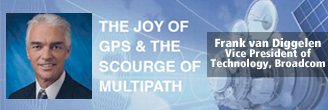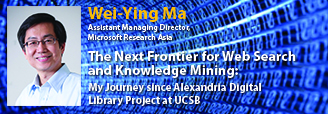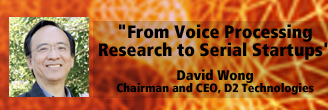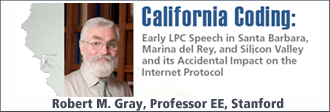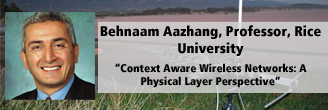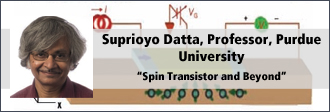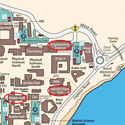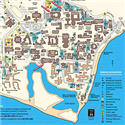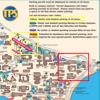Distinguished Lectures
Distinguished Lectures 2015-2019
ECE Distinguished Lecture: "A New Era for Exploring Power Efficient Hardware Accelerators: Devices, Architectures, and Lab Demonstrations"
John Paul Strachan, Hewlett Packard Labs, Palo Alto
February 28th (Thursday), 2019 at 10:00am
Engineering Science Building, Rm 1001
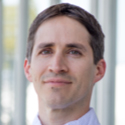
ABSTRACT
The world of computing appears to be entering a highly creative phase where novel architectures, circuits, and even devices beyond CMOS can not only be explored again, but any significant future performance gains may depend on them. A Cambrian explosion in the hardware space is developing, with massive extinction events likely to follow. I will describe my team’s efforts to simultaneously co-design from algorithms and architectures down to novel devices in order to find gains in speed and power. We have developed new circuits and assembled architectures that accelerate Finite Automata, enabling rapid pattern matching used in applications from security to genomics. We have also developed architectures leveraging the analog and non-volatile nature of memristors (tunable resistance switches) assembled in crossbar arrays to accelerate machine learning, image and signal processing. Significant improvements over CPUs, GPUs, and custom digital ASICs are forecasted in both such systems. Finally, I will describe and demonstrate how harnessing noise in analog circuits can be used to build a Classical Annealer for solving optimization problems more rapidly and at lower energy than any digital system or even the Quantum Annealers under intense development.
About John Paul Strachan:
John Paul Strachan leads the Rebooting Computing team at Hewlett Packard Labs in Palo Alto, CA. The team builds novel types of hardware from emerging device technology, with expertise spanning materials, device physics, circuits, architectures, benchmarking, modeling, and experimental design. His interests include computing applications in machine learning, network security, and optimization problems. John Paul studied at MIT and Stanford University for his undergraduate and PhD, respectively, and has been a researcher at HP/HPE for the past ten years. He has over 50 patents, has authored or co-authored over 60 peer-reviewed papers, and has been the PI of several US Government funded research programs. He has previously worked on nanomagnetic devices for memory for which he was awarded the Falicov Award from the American Vacuum Society, and has developed sensing systems for precision agriculture in a company which he co-founded. He serves in many professional societies including IEEE IEDM ExComm, the Nanotechnology Council ExComm, past program chair and steering member of the International Conference on Rebooting Computing, and related communities.
ECE Distinguished Lecture: "Statistical Inference Of And With Information Theoretic Quantities Via Compression"
Tsachy Weissman, Professor EE, Stanford University
March 15th (Wednesday), 2017 at 2:00pm
Engineering Science Building, Rm 1001
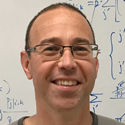
ABSTRACT
The talk will cover both classical and recent results with two intertwined themes. The first is that the characterization of fundamental limits in data compression and communication gives rise to quantities – such as entropy, mutual information, and directed information – that are of relevance to statistical inference at large. The second is that analytic tools and algorithmic know-how from compression can be harnessed to construct and analyze schemes for general tasks such as sequential decision making, non-sequential inference (e.g. denoising), and estimation of the degree to which one phenomenon is of relevance in prediction of another. A few examples will illustrate how some of these ideas are manifested in inference with real data such as financial time series, genomic sequences, and text.
About Tsachy Weissman:
Tsachy Weissman graduated summa cum laude with a B.Sc. in electrical engineering from the Technion in 1997, and earned his Ph.D. at the same place in 2001. He then worked at Hewlett Packard Laboratories with the information theory group until 2003, when he joined Stanford University, where he is currently Professor of Electrical Engineering and incumbent of the STMicroelectronics chair in the School of Engineering. He has spent leaves at the Technion, and at ETH Zurich. Tsachy's research is focused on information theory, compression, communication, statistical signal processing, the interplay between them, and their applications. Fellow of the IEEE, he is recipient of several best paper awards, and prizes for excellence in research and teaching. He served on the editorial board of the IEEE Transactions on Information Theory from Sept. 2010 to Aug. 2013, and currently serves on the editorial board of Foundations and Trends in Communications and Information Theory. He is Founding Director of the Stanford Compression Forum.
ECE Distinguished Lecture: "NEMO5, a Nanoelectronics Modeling Tool from Basic Physics to Real Devices and to Global Impact on nanoHUB.org"
Gerhard Klimeck, Professor ECE, Purdue University
June 6th (Monday), 2016 at 3:00pm
Engineering Science Building, Rm 1001
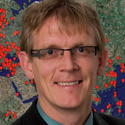
ABSTRACT
The downscaling of electronic devices has reached the range where the number of atoms in critical dimensions is countable, geometries are formed in three dimensions and new materials are being introduced. Under these conditions one can argue that the overall geometry constitutes a new material that cannot be found as such in nature and the distinction between new device and new material are blurry. The interactions of electronic, photons, and lattice vibrations are now governed by these new material properties and longer-range interaction mechanisms such as strain and gate fields. The Nanoelectronic Modeling tool suite NEMO5 is aimed to comprehend the critical multi-scale, multi-physics phenomena and deliver results to engineers, scientists, and students through efficient computational approaches. NEMO5’s general software framework easily includes any kind of atomistic model and is, insofar, able to compute atomistic strain, electronics band structures, charge density, current and potential, Schrödinger eigenvalues and wave-functions, phonon spectra, and non-equilibrium Green functions (NEGF) transport for a large variety of semiconductor materials and the software is entirely parallelized. We believe that such modeling capability is not available in any other modeling tool at this time.
The work conducted in the group spans a wide range of devices and concepts from work with the leading semiconductor industries on technologies for the sub 10nm transistors, over optical devices to improve lighting, to foundational device physics for quantum computing in Silicon. This presentation overviews various aspects of NEMO5 capabilities and interactions with academia and industry.
About Gerhard Klimeck:
Gerhard Klimeck is the Reilly Director of the Center for Predictive Materials and Devices (c-PRIMED) and the Network for Computational Nanotechnology (NCN) and a Professor of Electrical and Computer Engineering at Purdue University. He guides the technical developments and strategies of nanoHUB.org which annually serves over 1.4 million visitors worldwide with on-line simulation, tutorials, and seminars.
He was previously with NASA/JPL and Texas Instruments leading the Nanoelectronic Modeling Tool development (NEMO). His work is documented in over 450 peer-reviewed journal and proceedings articles resulting in over 10,000 citations and a citation h-index of 52 on Google Scholar. He is a fellow of the IEEE, American Physical Society, and the Institute of Physics.
ECE Distinguished Lecture: "Optical Communications Systems: What Drove Their Evolutionary Path?"
Andy Chraplyvy, Optical Technologies Research VP, Bell Labs
February 18th (Wednesday), 2015 at 10:00am
Engineering Science Building, Room 2001
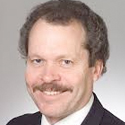
ABSTRACT
The evolution of lightwave communications systems from Megabits to Terabits was not a haphazard journey. In fact, it can be argued that there was only one available evolutionary path, driven by a once esoteric optical phenomenon found in silica fibers. Anecdotal evidence of this perhaps controversial assertion will be presented.
About Andy Chraplyvy:
Andrew Chraplyvy received the B.S. degree in physics from Washington University, St. Louis, Missouri and the M.S. and Ph.D. degrees in physics from Cornell University. Since 1980, he has been at Bell Laboratories studying optical nonlinearities and lightwave communications systems. He is currently Optical Technologies Research VP. He is a Bell Labs Fellow, Marconi Fellow, Fellow of the Optical Society of America and IEEE, and member of the National Academy of Engineering.
ECE / ME Distinguished Lecture: "Engineering classes on a Massive Scale: The Good, the Bad, the Ugly"
Magnus Egerstedt, Professor ECE, Georgia Institute of Techology
February 8th (Monday), 2015 at 3:30pm
Engineering Science Building, Rm 1001

ABSTRACT
Bridging the theory-practice gap in engineering education is a well-known, hard nut to crack. This is particularly true in the controls curriculum, where deep mathematical theory must coexist alongside practical experiments and considerations. In this talk, we will discuss how this bridge-building can be approached both in a MOOC (Massive Open Online Course) setting, in flipped classrooms, and through the use of remote-access robotics testbeds. In particular, the recent MOOC, Control of Mobile Robots, has been used to flip classrooms in robotics and controls classes at the Georgia Institute of Technology and at other institutions. The students take the MOOC and come to class prepared to program robots. In this talk, we will discuss the outcomes of these educational experiments, show that control classes are potentially ideal candidates for flipped classes, yet present real challenges for meaningful learning experiences.
About Magnus Egerstedt:
Magnus Egerstedt is the Schlumberger Professor in the School of Electrical and Computer Engineering at the Georgia Institute of Technology, where he serves as Associate Chair for Research. He received the M.S. degree in Engineering Physics and the Ph.D. degree in Applied Mathematics from the Royal Institute of Technology, Stockholm, Sweden, the B.A. degree in Philosophy from Stockholm University, and was a Postdoctoral Scholar at Harvard University. Dr. Egerstedt is the director of the Georgia Robotics and Intelligent Systems Laboratory (GRITS Lab), a Fellow of the IEEE, and a recipient of a number of research and teaching awards, including the Ragazzini Award from AACC.
ECE Distinguished Lecture: "What Have We Learned About Programming Heterogeneous Computing Systems?"
Wen-mei W. Hwu, Professor ECE, University of Illinois at Urbana-Champaign
October 26th (Monday), 2015 at 10:00am
Engineering Science Bldg (ESB), Room 2001
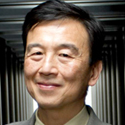
ABSTRACT
Since the introduction of CUDA in 2006, we have made tremendous progress in heterogeneous computing. We have built heterogeneous top supercomputers. We have used heterogeneous mobile computing applications. Much has been learned about of algorithms, languages, compilers and hardware architecture in this movement. How hard is it to program these systems today? How will we program these systems in the future? In this talk, I will go over the lessons learned from educating programmers and developing performance-critical libraries. I will then give a preview of the types of programming systems that will be needed to further reduce the software cost of heterogeneous computing.
About Wen-mei W. Hwu:
Wen-mei W. Hwu is a Professor and holds the Sanders-AMD Endowed Chair in the Department of ECE, University of Illinois at Urbana-Champaign. He is also CTO of MulticoreWare Inc., chief scientist of UIUC Parallel Computing Institute and director of the IMPACT research group. He directs the UIUC CUDA Center of Excellence and serves as one of the principal investigators of the NSF Blue Waters Petascale supercomputer. For his contributions, he received the ACM SigArch Maurice Wilkes Award, the ACM Grace Murray Hopper Award, the ISCA Influential Paper Award, the IEEE Computer Society B. R. Rau Award and the Distinguished Alumni Award in Computer Science of the University of California, Berkeley. He is a fellow of IEEE and ACM. Dr. Hwu received his Ph.D. degree in Computer Science from the University of California, Berkeley.
